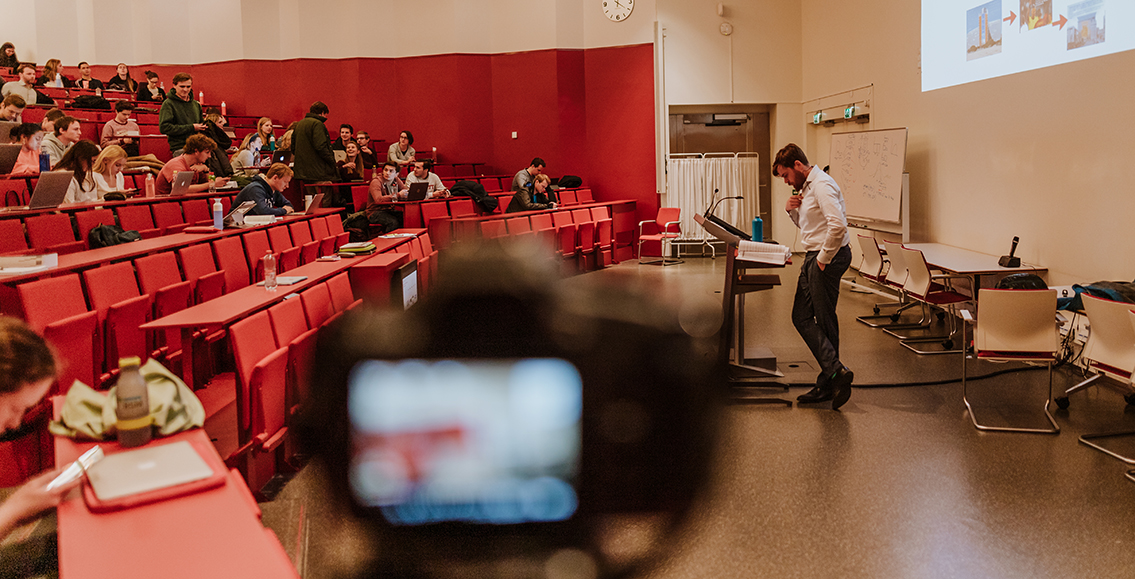The day before the exam week is set to start, students have watched a total of 300,000 minutes of online classes. This means recording classes is in fact useful, says UG’s Brightspace project manager Michiel van Geloven.
Even though many lecturers would like to do away with the practice, it appears students really do get something out of re-watching classes, Van Geloven says. ‘Students don’t do anything that isn’t useful to them.’
Pro-dean at the medical faculty (FMS) Gerda Croiset, who also chaired the Brightspace steering committee, feels it’s proof that the policy on online classes needs to change: more classes should be recorded and the recordings should be available more often.
Interaction
‘Lecturers worry that students won’t come to class if it’s also being recorded, but the students do like it’, she says.
At FMS, there’s a rule that the students themselves need to make sure there are at least ten of them in the room during class. The rest of them are allowed to watch online. But classes that require a lot of interaction currently aren’t being recorded.
Law faculty dean Wilbert Kolkman isn’t quite as convinced. ‘it’s great that people are making use of online classes’, he says. ‘As long as they know it’s an addition to in-person classes, not a replacement.’
Poor results
The law faculty doesn’t put recordings of classes online until a week before the exam. First-year students can’t watch any classes online at all. This is because of the poor results during the Covid pandemic, when many classes were available online.
Kolkman says this had a marked effect. This academic year, student attendance at interactive lectures has ‘strongly improved’.
Eight minutes
Van Geloven calculates that students have on average watched eight minutes of online classes each. But in reality, it’s more, he says. Because many students didn’t even have class this past block. Take those away, and the average increases.
And it has to, he says, because most students watch the online classes in their entirety. It’s not quite at 100 percent, he says, ‘because students easily skip the introduction and the breaks’.
‘Interestingly enough, the number of minutes watched gradually increased to 300,000’, says Van Geloven. In September, students watched between 50,000 and 150,000 minutes a day, but the week before the exam period, they watched an average of 250,000 minutes a day.




